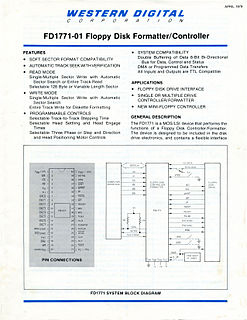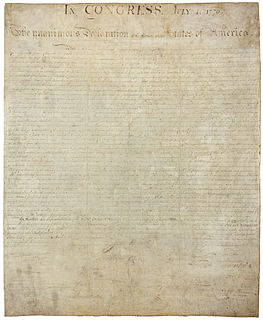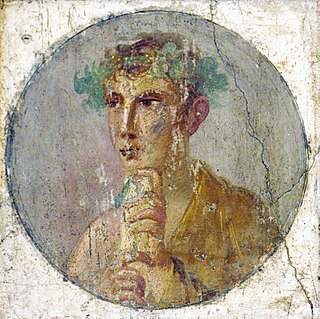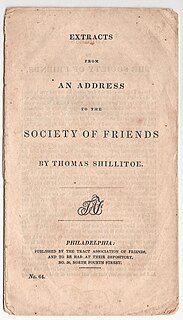 W
WAn archive is an accumulation of historical records – in any media – or the physical facility in which they are located. Archives contain primary source documents that have accumulated over the course of an individual or organization's lifetime, and are kept to show the function of that person or organization. Professional archivists and historians generally understand archives to be records that have been naturally and necessarily generated as a product of regular legal, commercial, administrative, or social activities. They have been metaphorically defined as "the secretions of an organism", and are distinguished from documents that have been consciously written or created to communicate a particular message to posterity.
 W
WAutografExpo was an exhibition of contemporary signed documents and autographs of public interest in Poland. The main organizer and promoter was forensic expert Jaroslaw Pijarowski.
 W
WAn autograph or holograph is a manuscript or document written in its author's or composer's hand. The meaning of autograph as a document penned entirely by the author of its content, as opposed to a typeset document or one written by a copyist or scribe other than the author, overlaps with that of holograph.
 W
WThe Berlinka ('Berliner'), also depozyt berliński and Pruski skarb, is the Polish name for a collection of German original manuscripts originally kept at the Prussian State Library in Berlin, which since the end of World War II are held by the Jagiellonian Library in Kraków. The legal status of the documents is subject of an ongoing debate.
 W
WA book is a medium for recording information in the form of writing or images, typically composed of many pages bound together and protected by a cover. The technical term for this physical arrangement is codex. In the history of hand-held physical supports for extended written compositions or records, the codex replaces its predecessor, the scroll. A single sheet in a codex is a leaf and each side of a leaf is a page.
 W
WThe Burney Collection consists of over 1,270 17th-18th century newspapers and other news materials, gathered by Charles Burney, most notable for the 18th-century London newspapers. The original collection, totalling almost 1 million pages, is held by the British Library.
 W
WA Certificate of Life is a certificate produced by a trusted entity to confirm that an individual was alive at the time of its creation.
 W
WA data sheet, data-sheet, or spec sheet is a document that summarizes the performance and other characteristics of a product, machine, component, material, subsystem, or software in sufficient detail that allows a buyer to understand what the product is and a design engineer to understand the role of the component in the overall system. Typically, a datasheet is created by the manufacturer and begins with an introductory page describing the rest of the document, followed by listings of specific characteristics, with further information on the connectivity of the devices. In cases where there is relevant source code to include, it is usually attached near the end of the document or separated into another file. Datasheets are created, stored, and distributed via product information management or product data management systems.
 W
WA diploma is a certificate or deed issued by an educational institution, such as college or university, that testifies that the recipient has successfully completed a particular course of study. The word diploma also refers to an academic award which is given after the completion of study in different courses such as diploma in higher education, diploma in graduation or diploma in post-graduation. Historically, it can also refer to a charter or official document, thus diplomatic, diplomat and diplomacy via the Codex Juris Gentium Diplomaticus.
 W
WThe Ebla tablets are a collection of as many as 1,800 complete clay tablets, 4,700 fragments, and many thousands of minor chips found in the palace archives of the ancient city of Ebla, Syria. The tablets were discovered by Italian archaeologist Paolo Matthiae and his team in 1974–75 during their excavations at the ancient city at Tell Mardikh. The tablets, which were found in situ on collapsed shelves, retained many of their contemporary clay tags to help reference them. They all date to the period between c. 2500 BC and the destruction of the city c. 2250 BC. Today, the tablets are held in museums in the Syrian cities of Aleppo, Damascus, and Idlib.
 W
WEphemera are any transitory written or printed matters that are not meant to be retained or preserved. The word derives from the Greek ephemeros, meaning "lasting only one day, short-lived". Some collectible ephemera are advertising, trade cards, airsickness bags, bookmarks, catalogues, greeting cards, letters, pamphlets, postcards, posters, prospectuses, defunct stock certificates or tickets, and zines.
 W
WA foot of fine is the archival copy of the agreement between two parties in an English lawsuit over land, most commonly the fictitious suit known as a fine of lands or final concord. The procedure was followed from c.1195 until 1833, and the considerable body of resulting records is now held at The National Archives, Kew, London.
 W
WFieldnotes refer to qualitative notes recorded by scientists or researchers in the course of field research, during or after their observation of a specific organism or phenomenon they are studying. The notes are intended to be read as evidence that gives meaning and aids in the understanding of the phenomenon. Fieldnotes allow the researcher to access the subject and record what they observe in an unobtrusive manner.
 W
WA firman, or ferman (Turkish), at the constitutional level, was a royal mandate or decree issued by a sovereign in an Islamic state. During various periods they were collected and applied as traditional bodies of law. The word firman comes from Persian فرمان meaning "decree" or "order".
 W
WA form is a document with spaces in which to write or select, for a series of documents with similar contents. The documents usually have the printed parts in common, except, possibly, for a serial number.
 W
WA gloss is a brief notation, especially a marginal one or an interlinear one, of the meaning of a word or wording in a text. It may be in the language of the text or in the reader's language if that is different.
 W
WHistorical documents are original documents that contain important historical information about a person, place, or event and can thus serve as primary sources as important ingredients of the historical methodology.
 W
WAn intentionally blank page or vacat page is a page that is devoid of content and may be unexpected. Such pages may serve purposes ranging from place-holding to space-filling and content separation. Sometimes, these pages carry a notice such as "This page intentionally left blank." Such notices typically appear in printed works, such as legal documents, manuals, and exam papers, in which the reader might otherwise suspect that the blank pages are due to a printing error and where missing pages might have serious consequences.
 W
WThe Afghanistan Compact was the outcome of the London Conference on Afghanistan in 2006. It was the result of consultations of the government of Afghanistan with the United Nations and the international community and established the framework for international cooperation with Afghanistan for the following five years. The Afghanistan Compact is a political commitment of the participants and not an actionable treaty.
 W
WLatvian identity card, also called Personal certificate, is officially recognised biometric identity document issued to Latvian citizens. They are also valid for travel within Europe, Georgia, French Overseas territories and Montserrat.
 W
WThe League of Nations archives is a collection of the historical records and official documents of the League of Nations. The collection is housed at the United Nations Office at Geneva (UNOG), where it is managed by the Institutional Memory Section (IMS) of the UN Library & Archives Geneva. It consists of approximately 15 million pages of content and comprises nearly 3 linear kilometers. The League of Nations archives' historical significance is recognized by UNESCO, with its inscription on the Memory of the World Register in 2009.
 W
WThe term "National Treasure" has been used in Japan to denote cultural properties since 1897. The definition and the criteria have changed since the introduction of the term. These ancient documents adhere to the current definition, and have been designated National Treasures since the Law for the Protection of Cultural Properties came into effect on June 9, 1951. The items are selected by the Agency for Cultural Affairs, a special body of the Ministry of Education, Culture, Sports, Science and Technology, based on their "especially high historical or artistic value". "Ancient documents" is one of thirteen categories of National Treasures recognized by the agency. The list presents 62 documents or sets of documents from classical to early modern Japan, from the Asuka period to the Meiji period. The actual number of items is more than 62 because groups of related objects have been combined into single entries. The list contains items of various type such as letters, diaries, records or catalogues, certificates, imperial decrees, testaments and maps. The documents record early Japanese government and Buddhism including early Japanese contact with China, the organization of the state and life at the Japanese imperial court. They are housed in 14 Japanese cities in temples (35), museums (13), libraries or archives (6), shrines (4), universities (2) and in private collections (2). Most entries (28) in the list are located in Kyoto. The documents in this list were made predominantly with a writing brush on paper and, in many cases, present important examples of calligraphy.
 W
WMicroforms are scaled-down reproductions of documents, typically either films or paper, made for the purposes of transmission, storage, reading, and printing. Microform images are commonly reduced to about 4% or one twenty-fifth of the original document size. For special purposes, greater optical reductions may be used.
 W
WMicroprinting is the production of recognizable patterns or characters in a printed medium at a scale that requires magnification to read with the naked eye. To the unaided eye, the text may appear as a solid line. Attempts to reproduce by methods of photocopy, image scanning, or pantograph typically translate as a dotted or solid line, unless the reproduction method can identify and recreate patterns to such scale. Microprint is predominantly used as an anti-counterfeiting technique, due to its inability to be easily reproduced by widespread digital methods.
 W
WThe Monumenta Germaniae Historica (MGH) is a comprehensive series of carefully edited and published primary sources, both chronicle and archival, for the study of Northwestern and Central European history from the end of the Roman Empire to 1500. Despite the name, the series covers important sources for the history of many countries besides Germany, since the Society for the Publication of Sources on Germanic Affairs of the Middle Ages has included documents from many other areas subjected to the influence of Germanic tribes or rulers. The editor from 1826 until 1874 was Georg Heinrich Pertz (1795–1876); in 1875 he was succeeded by Georg Waitz (1813–1886).
 W
WMonumenta Slavorum were two series of primary sources for the history of South Slavs, published by the Yugoslav Academy of Sciences and Arts:Monumenta spectantia historiam Slavorum Meridionalium Monumenta historico-juridica Slavorum Meridionalium
 W
WAn owner's manual is an instructional book or booklet that is supplied with almost all technologically advanced consumer products such as vehicles, home appliances and computer peripherals. Information contained in the owner's manual typically includes:Safety instructions; for liability reasons these can be extensive, often including warnings against performing operations that are ill-advised for product longevity or overall user safety reasons. Assembly instructions; for products that arrive in pieces for easier shipping. Installation instructions; for products that need to be installed in a home or workplace. Setup instructions; for devices that keep track of time or which maintain user accessible state. Instructions for normal or intended operations. Programming instructions; for microprocessor controlled products such as VCRs, programmable calculators, and synthesizers. Maintenance instructions. Troubleshooting instructions; for when the product does not work as expected. Service locations; for when the product requires repair by a factory authorized technician. Regulatory code compliance information; for example with respect to safety or electromagnetic interference. Product technical specifications. Warranty information; sometimes provided as a separate sheet.
 W
WPrinting is a process for mass reproducing text and images using a master form or template. The earliest non-paper products involving printing include cylinder seals and objects such as the Cyrus Cylinder and the Cylinders of Nabonidus. The earliest known form of printing as applied to paper was woodblock printing, which appeared in China before 220 AD for cloth printing. However, it would not be applied to paper until the seventh century. Later developments in printing technology include the movable type invented by Bi Sheng around 1040 AD and the printing press invented by Johannes Gutenberg in the 15th century. The technology of printing played a key role in the development of the Renaissance and the Scientific Revolution and laid the material basis for the modern knowledge-based economy and the spread of learning to the masses.
 W
WThe Reciprocal Guarantee of Two Nations was an addendum to the Polish Constitution of May 3, 1791, adopted on 20 October 1791 by the Great Sejm, which stated implementing principles that had not been spelled out in the constitution. The document specified the nature of the Polish–Lithuanian union and affirmed "the unity and indivisibility" of the Crown of the Kingdom of Poland and the Grand Duchy of Lithuania within a single state.
 W
WRelazioni were the final reports presented by Venetian ambassadors of their service in foreign states. Relazioni contained descriptions of the current political, military, economic, and social conditions of the country visited. Relazioni are important to historians for recording the development of diplomacy in early modern Europe.
 W
WA report is a document that presents information in an organized format for a specific audience and purpose. Although summaries of reports may be delivered orally, complete reports are almost always in the form of written documents.
 W
WA rotulus or rotula is a kind of roll consisting of a long and narrow strip of writing material, historically papyrus or parchment, that is wound around a wooden axle or rod and is written on its interior face or side such that it is unwound vertically so that the writing runs parallel to the rod, unlike the other kind of roll, namely the "scroll", whose writing runs perpendicular to the rod in multiple columns.
 W
WA safety data sheet (SDS), material safety data sheet (MSDS), or product safety data sheet (PSDS) is a document that lists information relating to occupational safety and health for the use of various substances and products. SDSs are a widely used system for cataloguing information on chemicals, chemical compounds, and chemical mixtures. SDS information may include instructions for the safe use and potential hazards associated with a particular material or product, along with spill-handling procedures. The older MSDS formats could vary from source to source within a country depending on national requirements; however, the newer SDS format is internationally standardized.
 W
WSecurity printing is the field of the printing industry that deals with the printing of items such as banknotes, cheques, passports, tamper-evident labels, security tapes, product authentication, stock certificates, postage stamps and identity cards. The main goal of security printing is to prevent forgery, tampering, or counterfeiting. More recently many of the techniques used to protect these high-value documents have become more available to commercial printers, whether they are using the more traditional offset and flexographic presses or the newer digital platforms. Businesses are protecting their lesser-value documents such as transcripts, coupons and prescription pads by incorporating some of the features listed below to ensure that they cannot be forged or that alteration of the data cannot occur undetected.
 W
WSepoltuario is a register in which the burials in a specific Italian cemetery are noted.
 W
WSilva rerum, polonized sylwa or and sometimes described as a home chronicle was a specific type of a book, a multi-generational chronicle, kept by many Polish and Lithuanian noble families from the 16th through 18th centuries. Some authors of modern Polish postmodern literature try to create works similar to the silvae rerum of the past. In historical Poland it was written by members of the szlachta as a diary or memoir for the entire family, recording family traditions, among other matters; they were not intended for a wider audience or printing ; some were also lent to friends of the family, who were allowed to add their comments to them. It was added to by many generations, and contained various information: diary-type entries on current events, memoirs, letters, political speeches, copies of legal documents, gossips, jokes and anecdotes, financial documents, economic information, philosophical musings, poems, genealogical trees, advice for the descendants and others. The wealth of information in silva is staggering; they contain anything that their authors wished to record for future generations. Some silvae rerum were of truly enormous proportions, with thousands of pages although most common size is from 500 to 800 pages. They were written from 16th century to the mid-18th century.
 W
WA tomos in the Eastern Orthodox Church is a decree of the head of a particular Eastern Orthodox church on certain matters.
 W
WA tract is a literary work and, in current usage, usually religious in nature. The notion of what constitutes a tract has changed over time. By the early part of the 21st century, a tract referred to a brief pamphlet used for religious and political purposes, though far more often the former. Tracts are often either left for someone to find or handed out. However, there have been times in history when the term implied tome-like works. A tractate, a derivative of a tract, is equivalent in Hebrew literature to a chapter of the Christian Bible.